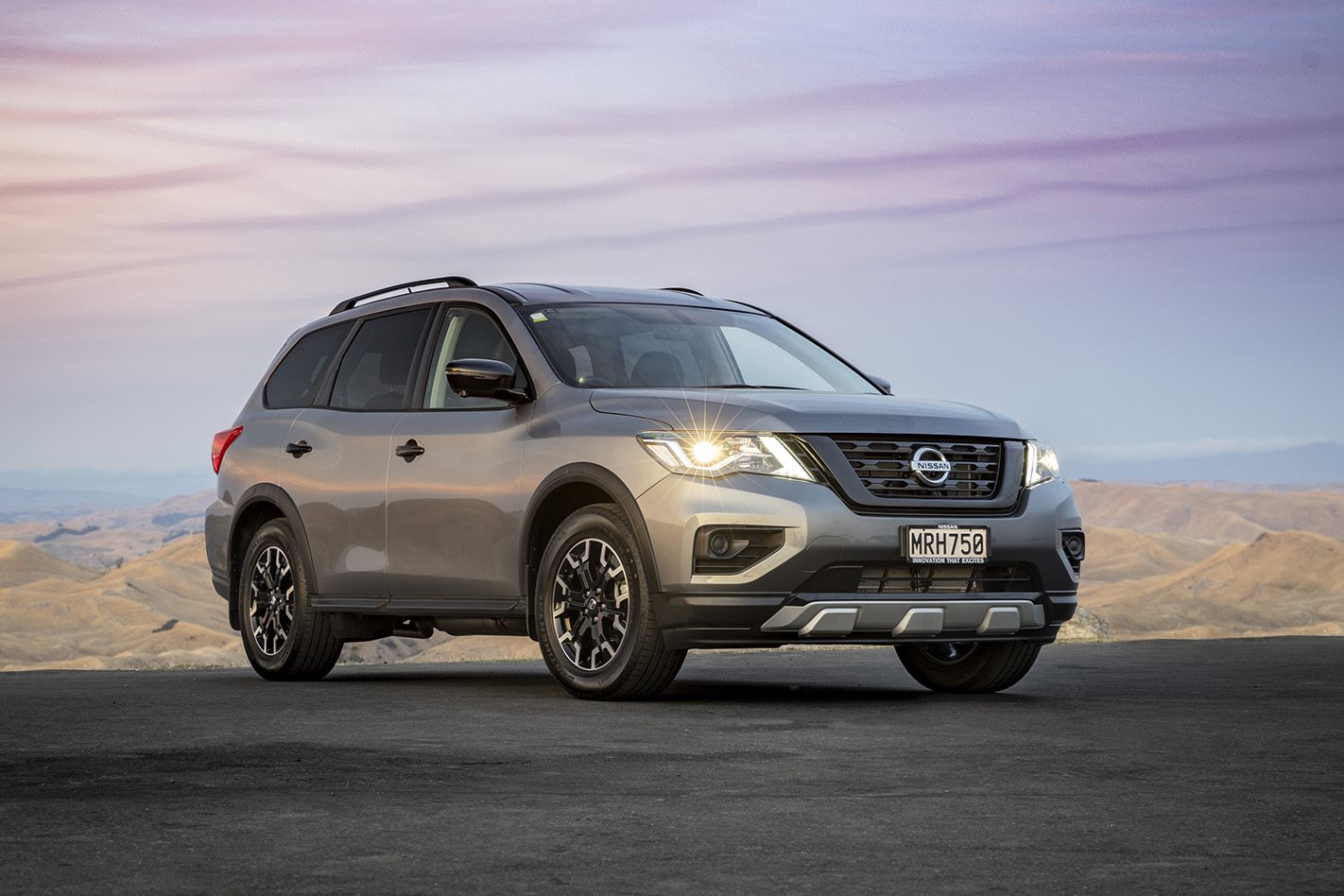
What is it?
The Pathfinder seven-seat SUV is the latest Nissan model to gain a special-edition N-Trek variant, after the Navara ute and X-Trail medium SUV.
The N-Trek package adds a host of sporty exterior trim enhancements to the V6 petrol Pathfinder ST+ and ST-L variants, with a choice of two- or four-wheel-drive traction.
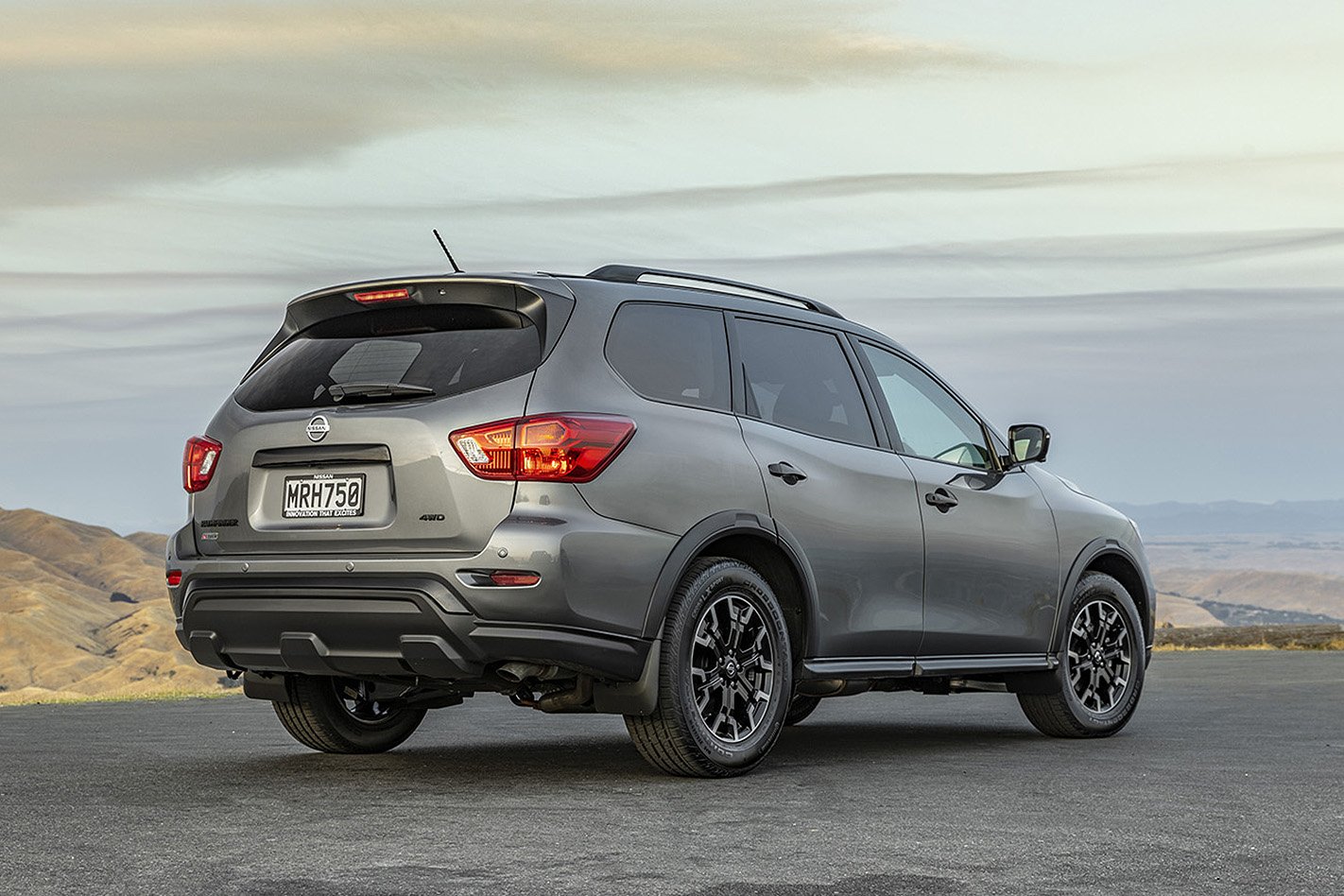
These include a blackened front grille and silver lower bumper guard, plus black wheel arches, door handles, roof rails and door mirrors. The Pathfinder N-Trek also stands out with bespoke badges and black and silver 18-inch alloy wheels shod with 255/60R Continental Crosscontact tyres that are 20mm wider than the standard rubber for better grip.
Available in four colours, Ivory Pearl, Diamond Black, Gun Metallic and Caspian Blue, the N-Trek versions attract a $2250 premium over the their standard equivalents, with premium paint (every option but Caspian Blue) costing an additional $595.
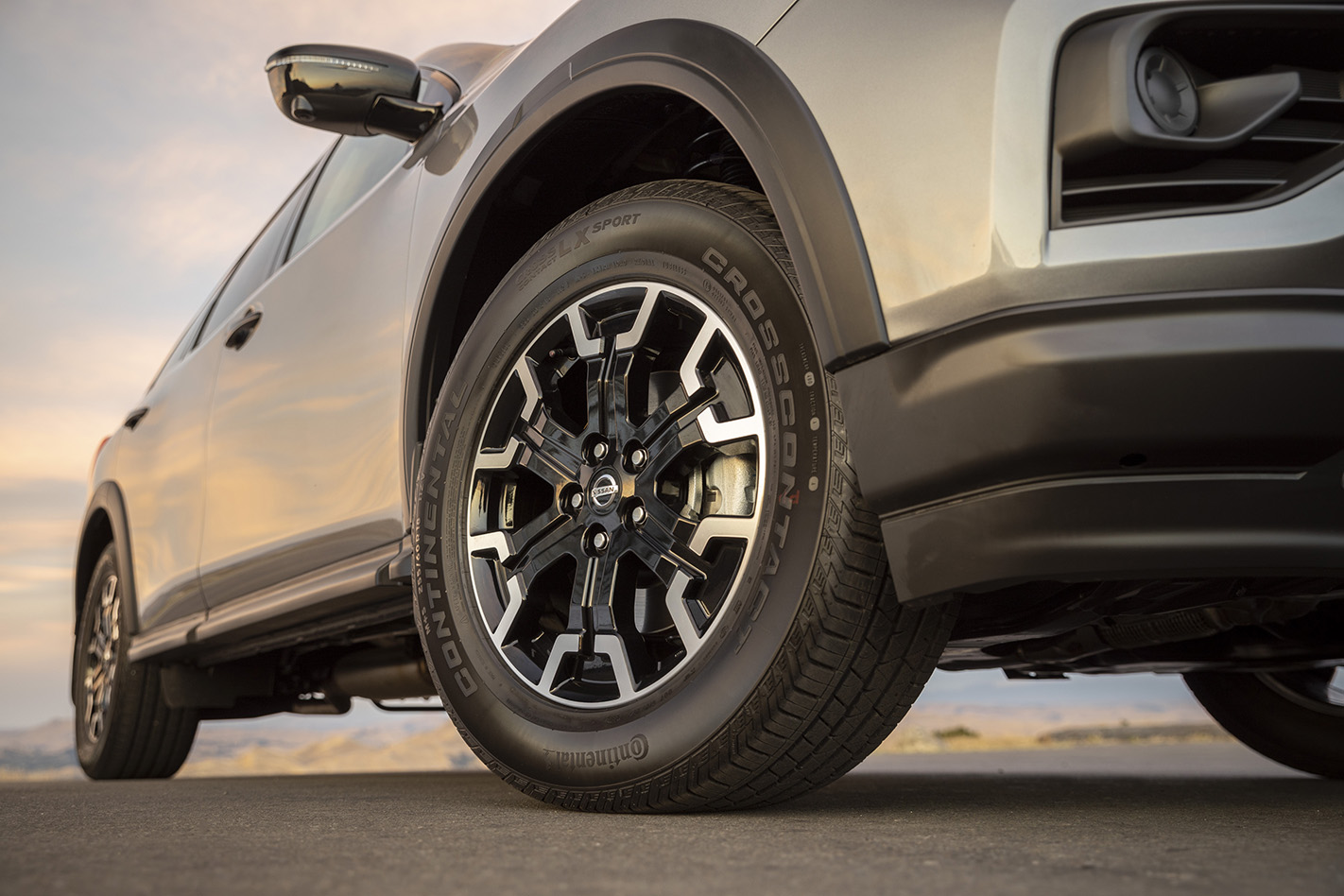
Pathfinder N-TREK retail pricing is as follows:
- 2WD Pathfinder ST+ N-TREK- $46,840
- 4WD Pathfinder ST+ N-TREK- $50,340
- 2WD Pathfinder ST-L N-TREK- $57,140
- 4WD Pathfinder ST-L N-TREK- $60,640
What’s it like to live with?
Active-wear, and perhaps tyre thickness, aside the N-Trek kit doesn’t add anything by way of interior amenity or driving dynamics to the Pathfinder ST+. It’s purely an aesthetic exercise and to that end it succeeds. Like a tailored suit it manages to sharpen the Pathfinder’s portly appearance and spruce-up its six year-old design.
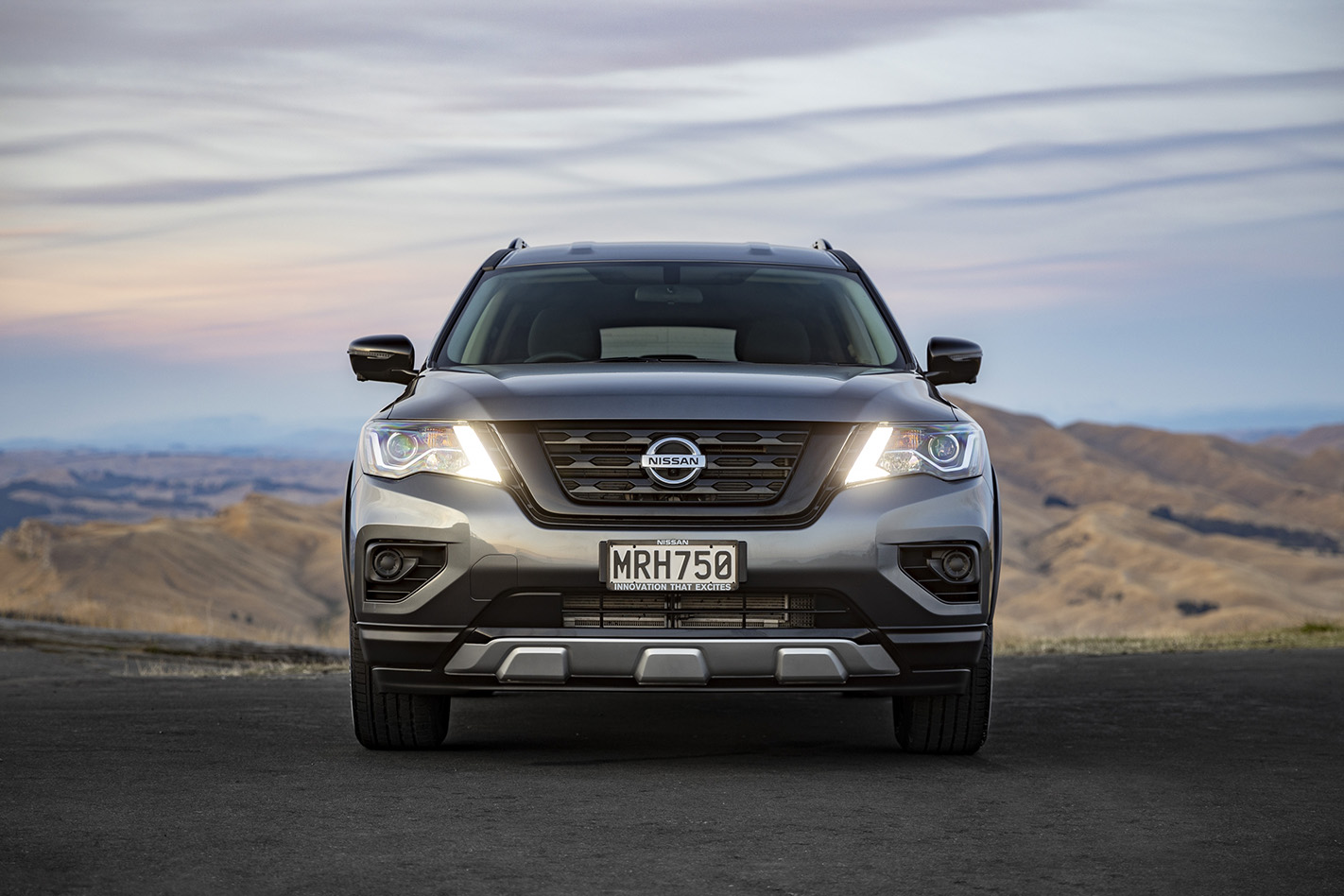
As for the ST+ spec itself, it lacks a few creature comforts and functions found in the $10,000-costlier leather-trimmed ST-L, but it’s still incredibly spacious and the cloth seats are very comfortable.
That said it’s not exactly short on standard features with: three-zone climate control with air vents in all three rows, power-adjusted driver’s seat, key-less entry and start, and eight-inch touchscreen with satellite navigation, and a 360-degree parking monitor that proves very handy when trying to park a 5.04m x 1.96m SUV.
The infotainment is user friendly, though it does lack Android Auto and Apple CarPlay smartphone mirroring that’s available in key rivals such as the Mazda CX-9, Holden Acadia and the five-seat Ford Endura.
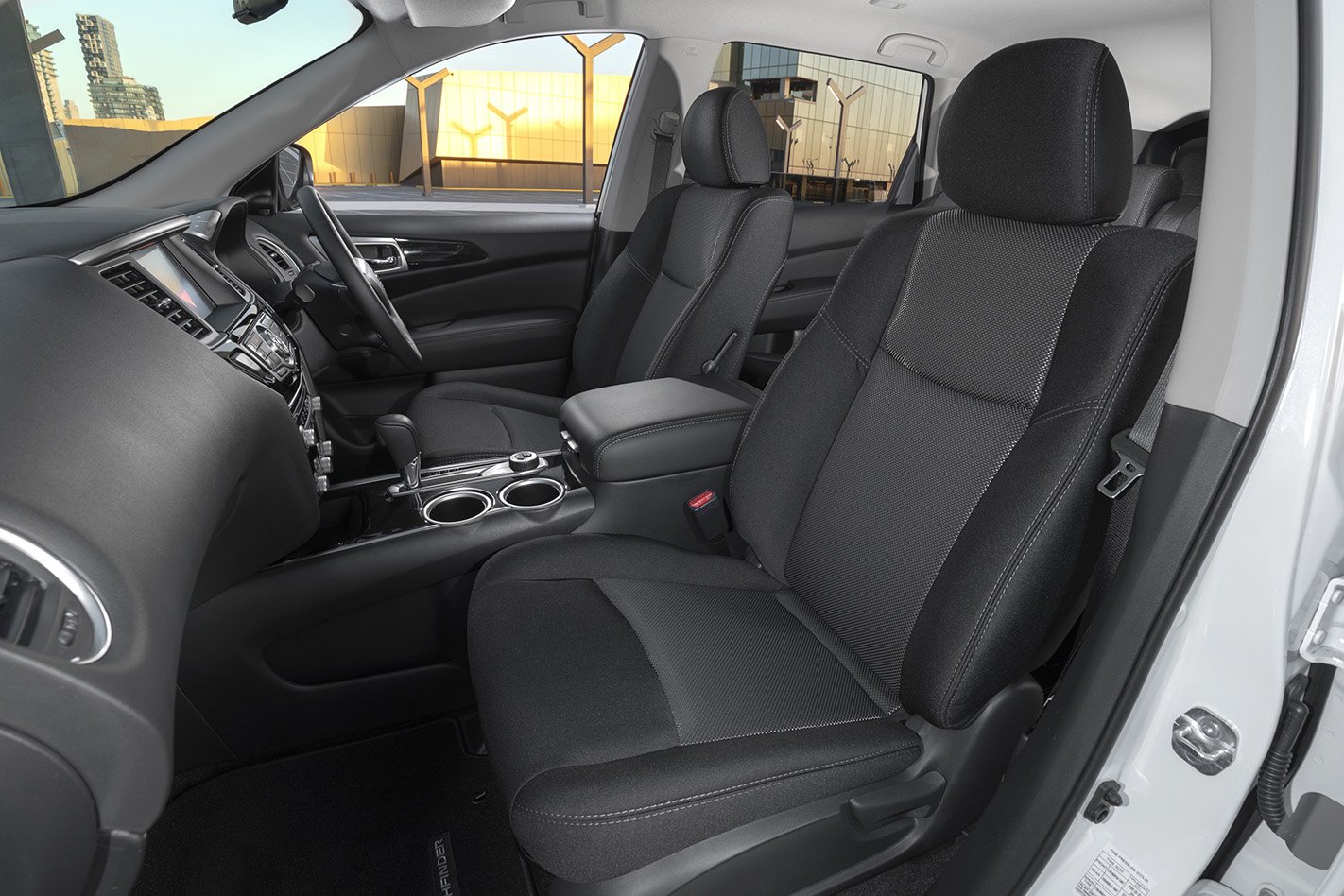
The front seats are great for long distance driving, with broad cushions and good back support. The middle row is also comfortable and offers plenty of leg and headroom with the flat floor ensuring that even the middle passenger has somewhere to put their feet. As well as air vents and climate control settings, the middle row seats also have their own USB and micro-USB sockets to keep electronic devices charged.
The third row has more legroom than most of the Pathfinder’s seven-seat rivals, and allows for two adults to be comfortable for shorter distances, with entry and egress helped by easy-folding middle seats.

Other conveniences include 16 cup holders, which seems like overkill considering it seats up to seven, though they can be used to store other odds and sods. And there’s a deep centre console bin with a shelf to store other bigger items. This is possible as there’s no handbrake handle, but the foot-operated parking brake that helps free up the space is a bit of an archaism.
With the third row in use the boot space can store a handy 503-litres of stuff, but folding them down for a five-seat configuration expands the cargo area to a whopping 1164 litres, and up to 2004 litres with the 60:40-split middle-row seat backs folded down.
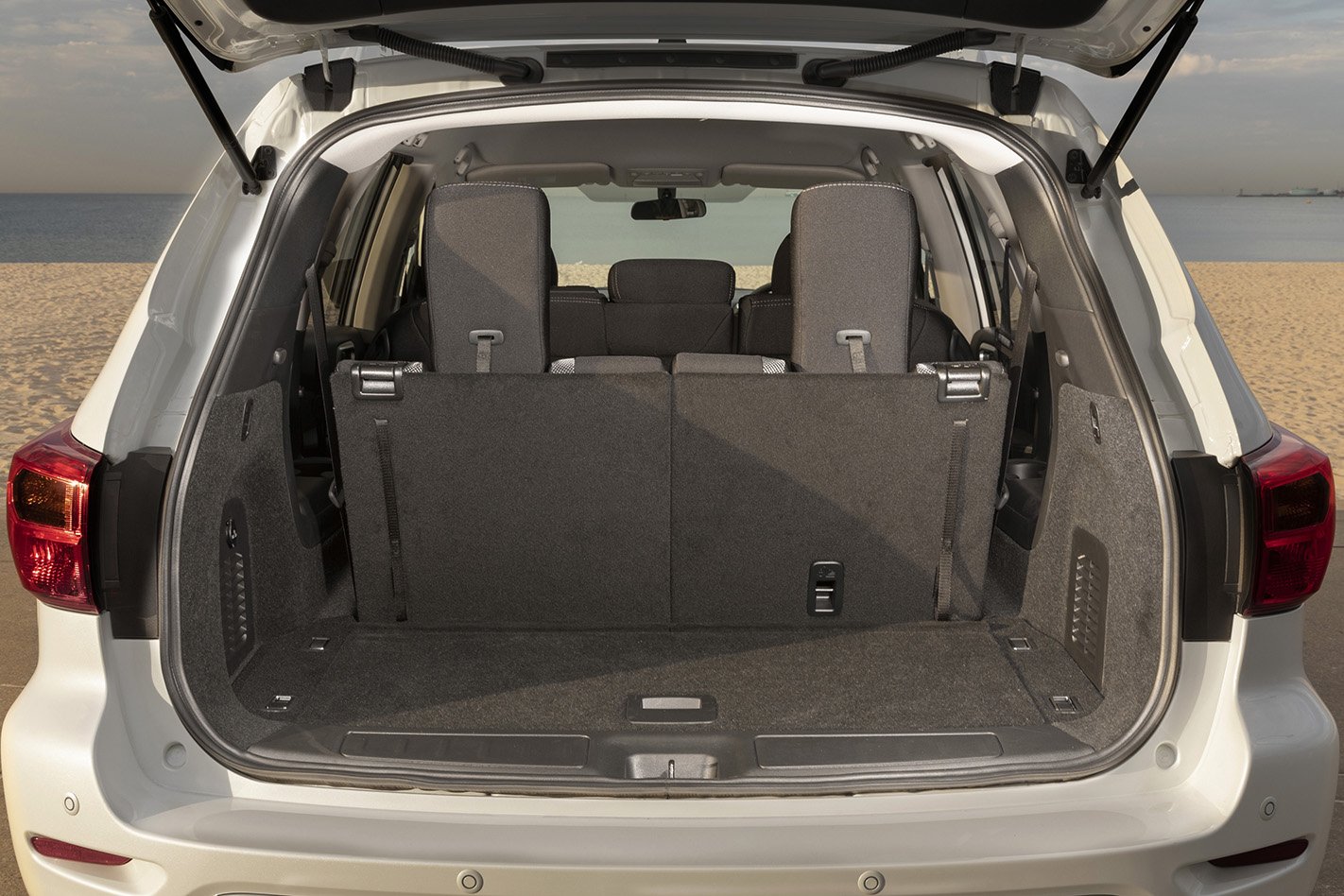
Safety wise, the Pathfinder has autonomous emergency braking, forward collision alert, blind-spot monitoring, rear cross-traffic alert and six airbags.
The 202kW/340Nm V6 petrol engine has an official combined fuel consumption of 10.1L/100km, which is a little thirsty while being about par with its V6 counterparts such as the Acadia, Grand Cherokee and Toyota Kluger.
The Nissan Pathfinder is covered by Nissan’s five-year, unlimited kilometre warranty.
What’s it like to drive?
Unlike the original Pathfinders that were built on the Navara ute’s ladder frame chassis, the current model has a more urbane ride that rides over bumps well. It can feel a little heavy and spongy at times, but body roll is well contained.

The 4WD, as Nissan calls it, is actually a selectable all-wheel-drive system that sends traction to the rear wheels when it’s needed. Unlike the original Pathfinder it isn’t designed for serious off-roading, but is a little more capable on dicey surfaces such as gravel, mud and snow than other big soft-roaders such as the Toyota Kluger and Mazda CX-9.
EXPLAINED: The difference between AWD and 4WD
While driving on limestone gravel roads in New Zealand’s Hawke’s Bay region, I did find the rear-end slide through bends with ‘4WD’ selected, with traction only going to the rear wheels when absolutely necessary.
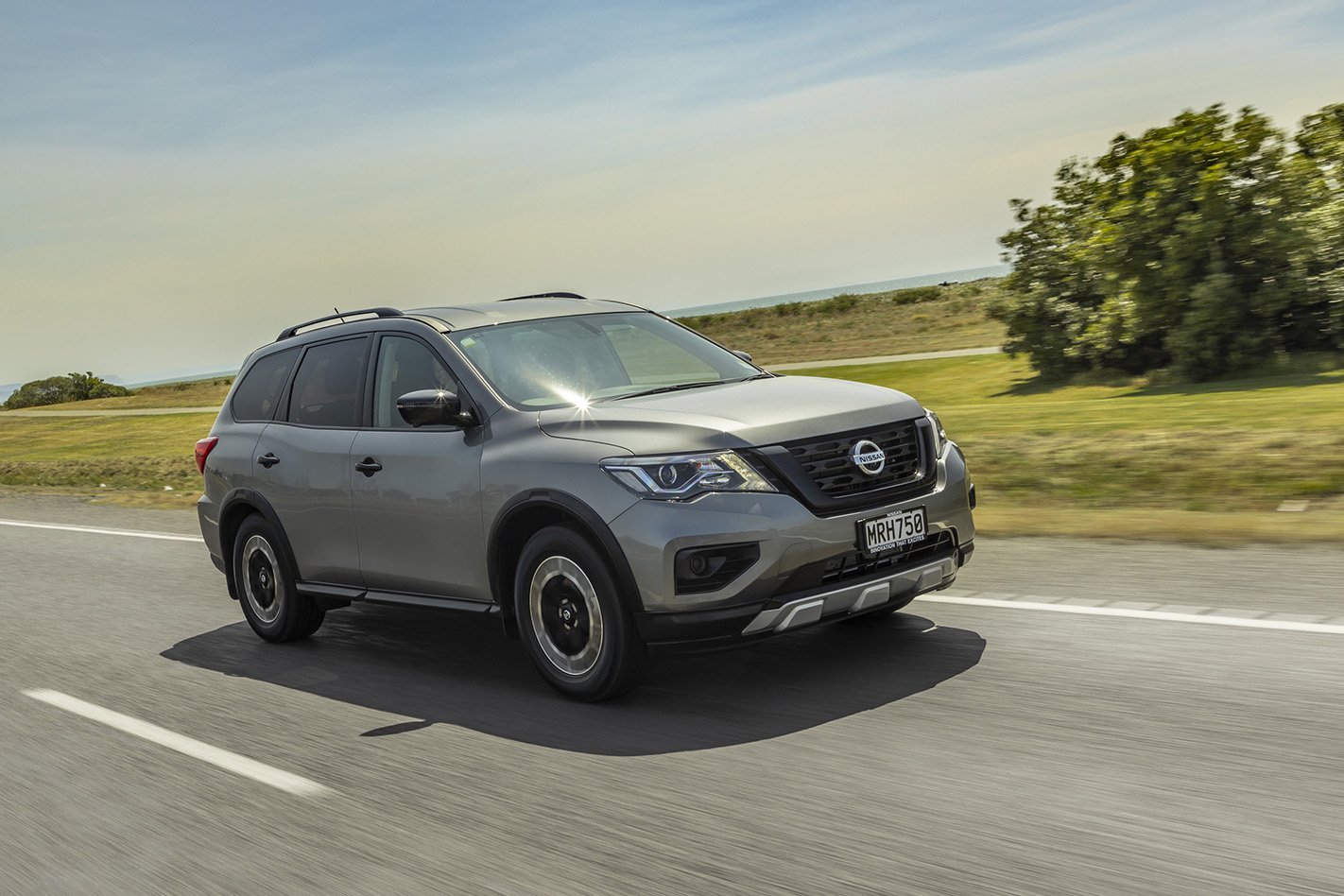
Back on the bitumen the Pathfinder is good highway cruiser; the V6 engine provides enough grunt, though things can get a little revvy when you put the foot down thanks to the CVT auto.
Is it worth it?
Spending an extra $2250 over the ST+ 4WD’s $48,090 retail price brings pretty good value considering all the accessories the N-Trek package brings and how they smarten up the Pathfinder’s appearance.
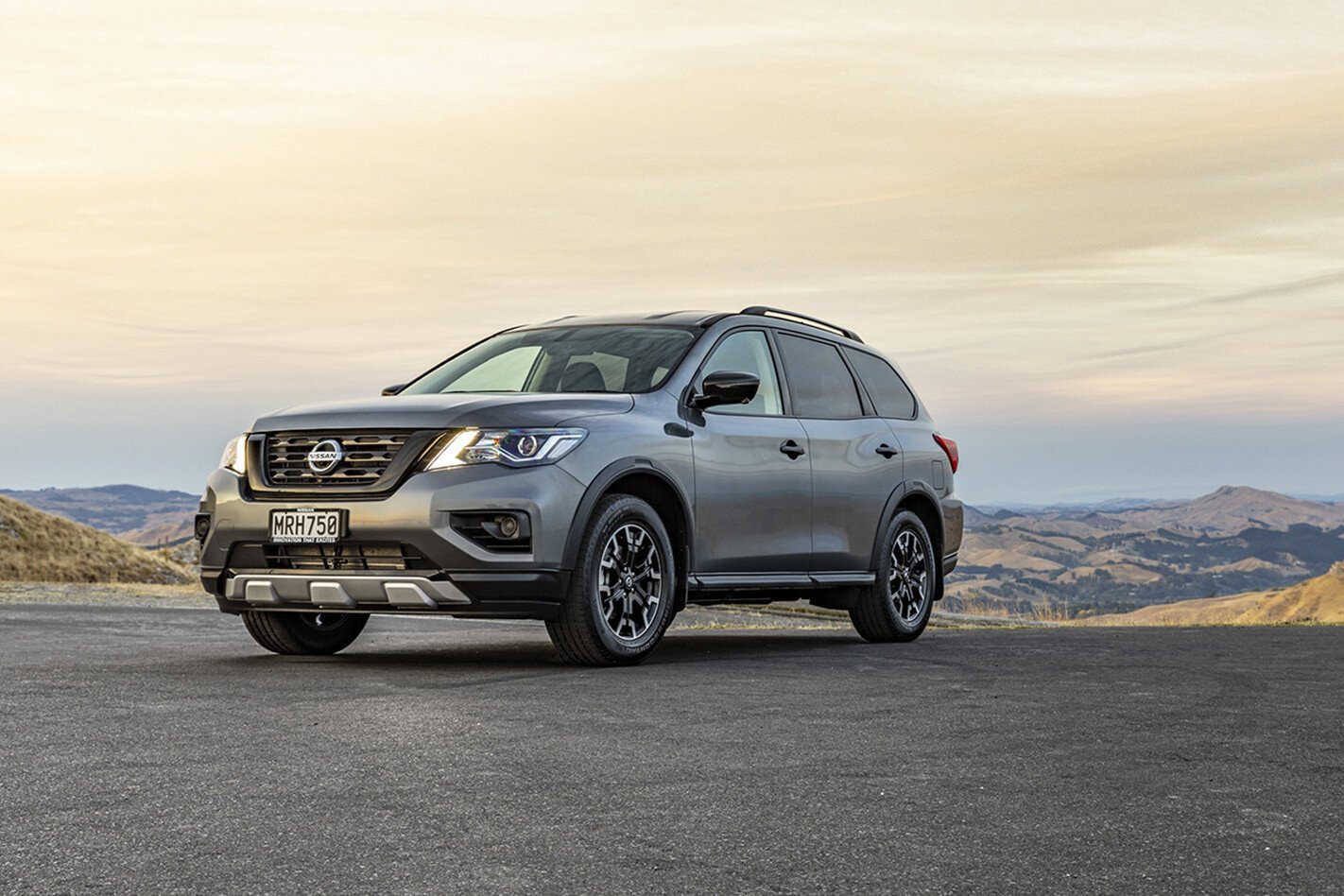
And of the N-Trek versions this is easily the pick of the bunch. The 4WD system is lot handier than the less-expensive FWD on slippery surfaces and when you need to tow anything.
And while the ST-L N-Trek 4WD brings a host of desirable extras such as partial leather trim, 13-speaker Bose sound system, two sunroofs, and LED headlights, you probably won’t really miss them as much as you’ll appreciate pocketing the $10,000 in change.
PROS: Sharper looks than standard Pathfinders, spacious interior, cargo capacity, CONS: Thirsty V6 petrol; foot-operated park brake, dated infotainment




